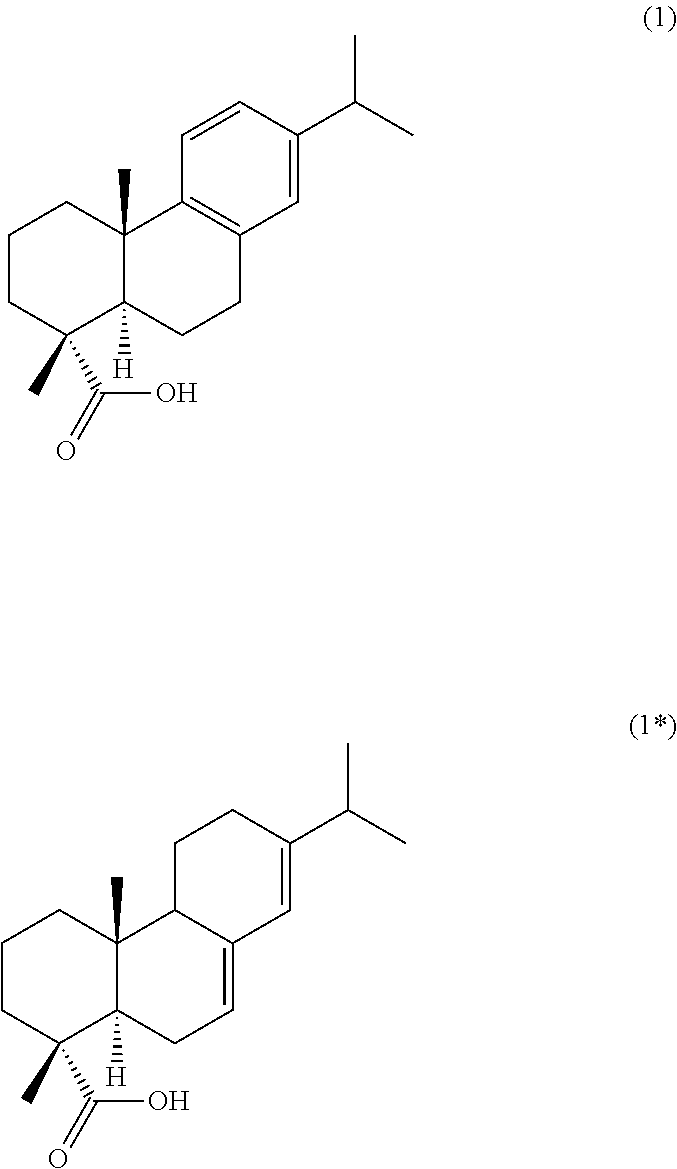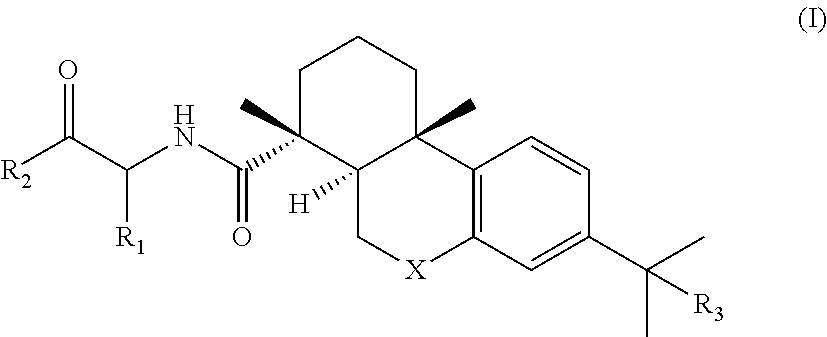Abietane-type diterpenoids
a diterpene and abietane technology, applied in the field of abietane-type diterpenoids, can solve the problems of chronic infection, inability to fully optimize the treatment of human diseases, frequent side effects of allergic reactions to resin-based products, etc., and achieve excellent therapeutic efficacy, potent antibacterial properties, and reduced viable cells
- Summary
- Abstract
- Description
- Claims
- Application Information
AI Technical Summary
Benefits of technology
Problems solved by technology
Method used
Image
Examples
examples
[0187]The abietane-type diterpenes reported herein refer to the general formula (I) and examples of their synthesis below. Details of the synthetic procedures are provided at the end of the Examples chapter. Used reagents and conditions: i. 1-Ethyl-3-(3-dimethylaminopropyl)carbodiimide hydrochloride (EDC.HCl), Hydroxybenzotriazole (HOBt), N,N-Diisopropylethylamine (DIPEA), Amino acid alkyl ester or di- / tripeptide alkyl ester, dimethylformamide (DMF), r.t.; ii. NaOH (4 M), THF:MeOH, 0° C. to r.t.; iii. EDC.HCl, HOBt, NH3 (aq), DMF, r.t. iv. CrCO3, ethyl acetate, acetic acid, 50° C.; v. NH2OH.xHCl, pyridine, EtOH, 100° C.
[0188]Overall, our synthetic strategy involved the coupling of several aminoacid or peptidic residues to the core of dehydroabietic acid by means of easy and relatively inexpensive carbodiimide coupling reactions, in high yields. Both the starting materials and the aminoacid and peptidic building blocks are commercially available at affordable prices. Further chemical...
PUM
| Property | Measurement | Unit |
|---|---|---|
| Molar density | aaaaa | aaaaa |
| Antimicrobial properties | aaaaa | aaaaa |
Abstract
Description
Claims
Application Information
 Login to View More
Login to View More - R&D
- Intellectual Property
- Life Sciences
- Materials
- Tech Scout
- Unparalleled Data Quality
- Higher Quality Content
- 60% Fewer Hallucinations
Browse by: Latest US Patents, China's latest patents, Technical Efficacy Thesaurus, Application Domain, Technology Topic, Popular Technical Reports.
© 2025 PatSnap. All rights reserved.Legal|Privacy policy|Modern Slavery Act Transparency Statement|Sitemap|About US| Contact US: help@patsnap.com



